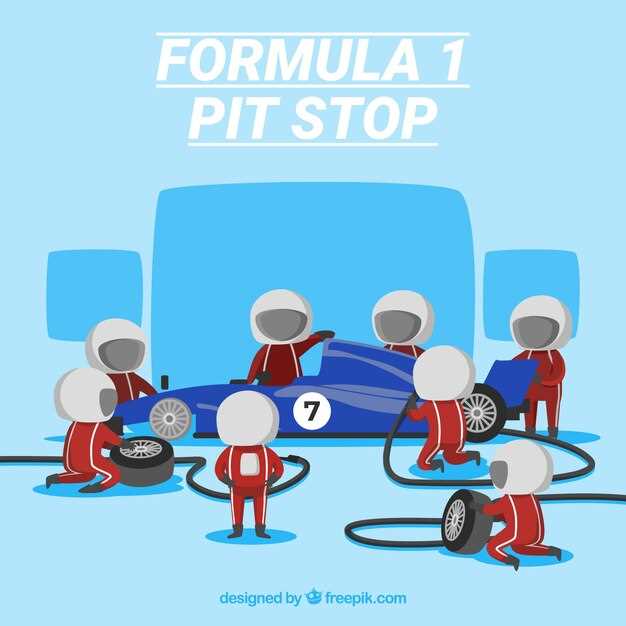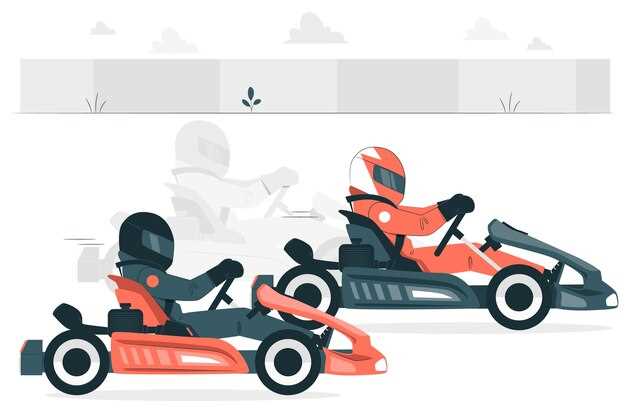
Building a successful GT racing team involves meticulous planning and a clear understanding of the core elements that contribute to high performance on the track. A well-organized team does not simply happen; it requires a robust structure that encompasses a range of roles, from skilled drivers to dedicated pit crew members. Each individual plays a vital part in the overall dynamics and effectiveness of the team, which is essential for competing at the highest levels of racing.
The first step in assembling your team is defining its structure. Every member should have clearly delineated responsibilities that align with the overall goals of the team. This structure should include positions such as team manager, chief engineer, mechanics, and, of course, the drivers. Each role contributes unique insights and skills that are critical to the collective success of the team. Establishing this framework early on helps create a sense of shared purpose and empowers each individual to excel in their designated area.
In addition to roles, fostering a culture of collaboration and communication within the team is essential for its success. Regular meetings, updates, and feedback sessions will ensure that everyone is on the same page and working towards common objectives. This collaborative spirit not only enhances performance but also builds trust among team members, paving the way for a more cohesive and resilient structure in high-pressure situations on the racetrack.
Defining Roles and Responsibilities in Your Racing Team
Creating a successful GT racing team requires a clear structure that delineates each member’s role and responsibilities. This not only enhances efficiency but also ensures that everyone understands their contribution to the team’s goals.
The team can be broadly categorized into several key roles:
Team Principal: The leader of the team, responsible for the overall vision and strategy. This individual must ensure effective communication and coordination among all team members.
Technical Director: Oversees the engineering and technical aspects of the race cars. This role involves making crucial decisions about car development, setup, and performance enhancements.
Race Engineer: Works closely with the driver during races, providing real-time data analysis and strategy adjustments. This role requires a deep understanding of car dynamics and race conditions.
Drivers: The face of the team, their performance directly impacts results. It’s essential that drivers communicate effectively with their engineers to optimize car performance.
Mechanics: Responsible for the maintenance and repair of vehicles. Each mechanic should have specialized skills, ensuring that the team can address any issues swiftly and effectively.
Data Analysts: Collect and analyze performance data from practice sessions and races. Their insights help refine strategies and improve car setup for future events.
Assembling a team with defined roles fosters accountability and encourages teamwork. Each member must recognize that success hinges on collaboration and mutual understanding of their responsibilities within the team.
Overall, a well-structured racing team is essential for achieving competitive success in GT racing. By clearly defining roles and responsibilities, you set the foundation for a cohesive unit that can perform at the highest levels.
Building a Network of Sponsors and Partners for Support

Securing sponsorship and partnership deals is a critical aspect of establishing a successful GT racing team. A strong network not only provides essential financial backing but also enhances the team’s credibility and market reach. Here are key steps to build a robust network of sponsors and partners:
-
Identify Potential Sponsors:
- Research companies that align with your team’s values and audience.
- Look for businesses already involved in motorsports or those seeking brand exposure in the racing community.
- Consider local businesses, as they may have a vested interest in supporting community-related events.
-
Develop a Compelling Proposal:
- Create a detailed sponsorship proposal outlining the benefits for potential sponsors.
- Highlight the team’s achievements, goals, and the audience reach during races.
- Include various sponsorship tiers to attract companies of different sizes.
-
Utilize Networking Opportunities:
- Attend motorsport events and industry conferences to make direct connections.
- Engage with potential sponsors and partners through social media platforms.
- Join racing organizations or chambers of commerce to expand your network.
-
Leverage Existing Relationships:
- Utilize relationships with team members, fans, and other stakeholders to make introductions.
- Encourage team drivers and staff to connect their contacts with potential sponsors.
-
Maintain Positive Relationships:
- Keep sponsors informed about team progress and race results.
- Include sponsors in team events and promotions to strengthen ties.
- Show gratitude through regular communication and recognition of their support.
Building a network of sponsors and partners is an ongoing process that requires persistence, creativity, and professionalism. A well-supported GT racing team not only enhances its performance on the track but also maximizes opportunities for growth and success in the sport.
Establishing a Training and Development Program for Drivers

Creating a robust training and development program for drivers is essential for any successful racing team. This program should focus on enhancing driving skills, physical fitness, mental toughness, and teamwork. Each aspect is crucial for optimizing performance on the track.
Driving Skills Development: A structured curriculum is necessary. This can include regular track days, simulator sessions, and participation in various racing events. Drivers should be exposed to different racing conditions and vehicle types to develop adaptability. Constructive feedback from coaches and experienced drivers should be a regular feature of the program to help identify areas for improvement.
Physical Fitness Training: Racing requires peak physical condition. Implement a fitness regime focused on strength, endurance, and flexibility. This may involve partnerships with physical trainers specialized in racing. Cardio workouts improve stamina, while strength training supports g-forces experienced during races. Nutrition should also be emphasized to ensure drivers maintain peak energy levels.
Mental Preparation: Mental toughness is vital in racing, where split-second decisions can determine a race’s outcome. Integrate psychological training into the program, such as visualization techniques and stress management exercises. Employing sports psychologists can help drivers develop coping strategies for high-pressure situations encountered on race day.
Teamwork and Communication: Foster a culture of collaboration within the team. Regular team-building activities and workshops can enhance communication skills among drivers and support staff. Understanding each team member’s strengths and weaknesses can improve on-track coordination and strategy execution, leading to better overall results.
By allocating resources and attention to these areas, a racing team can cultivate well-rounded drivers ready to compete at the highest levels. The investment in a comprehensive training and development program will pay dividends in performance and success on the race track.











